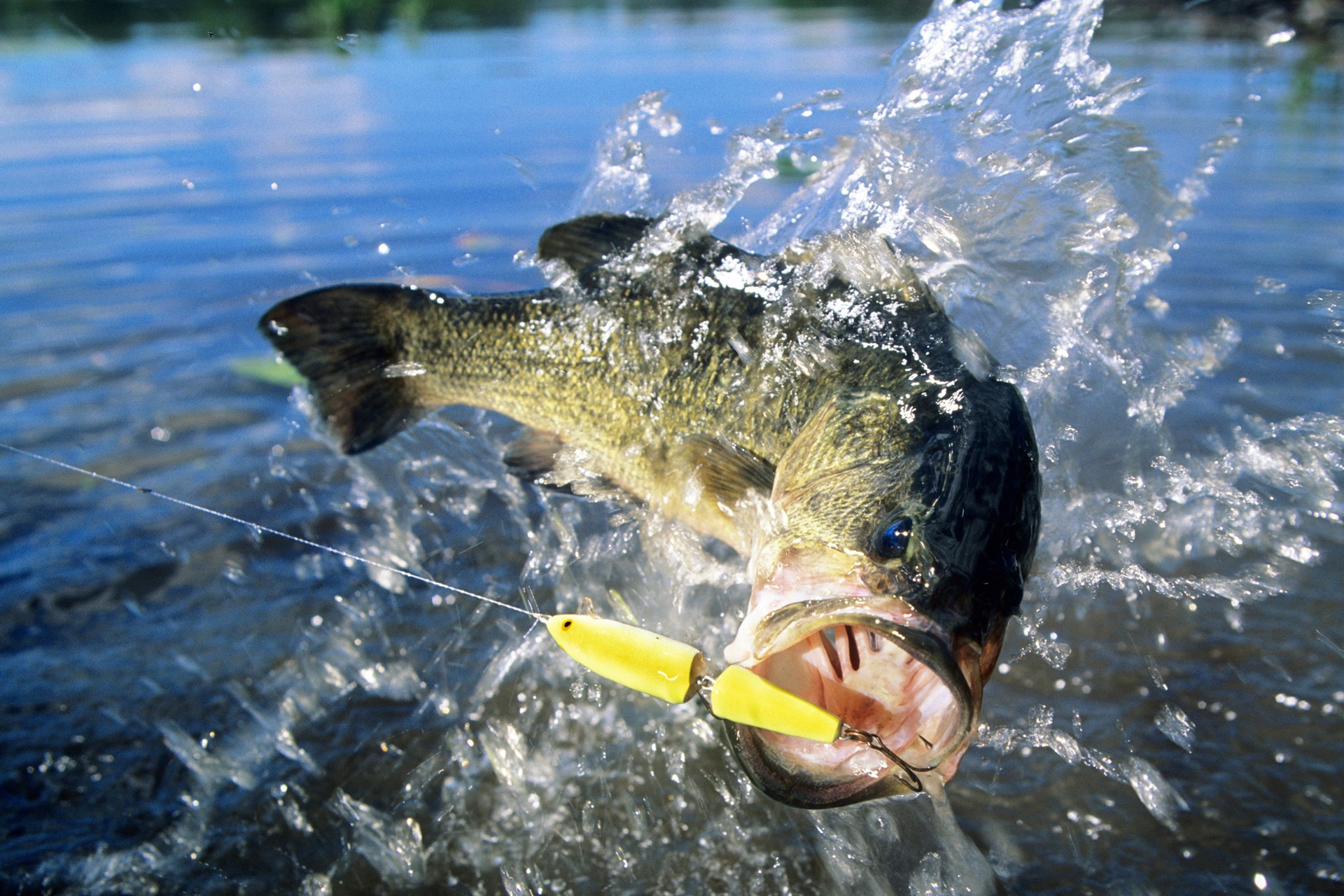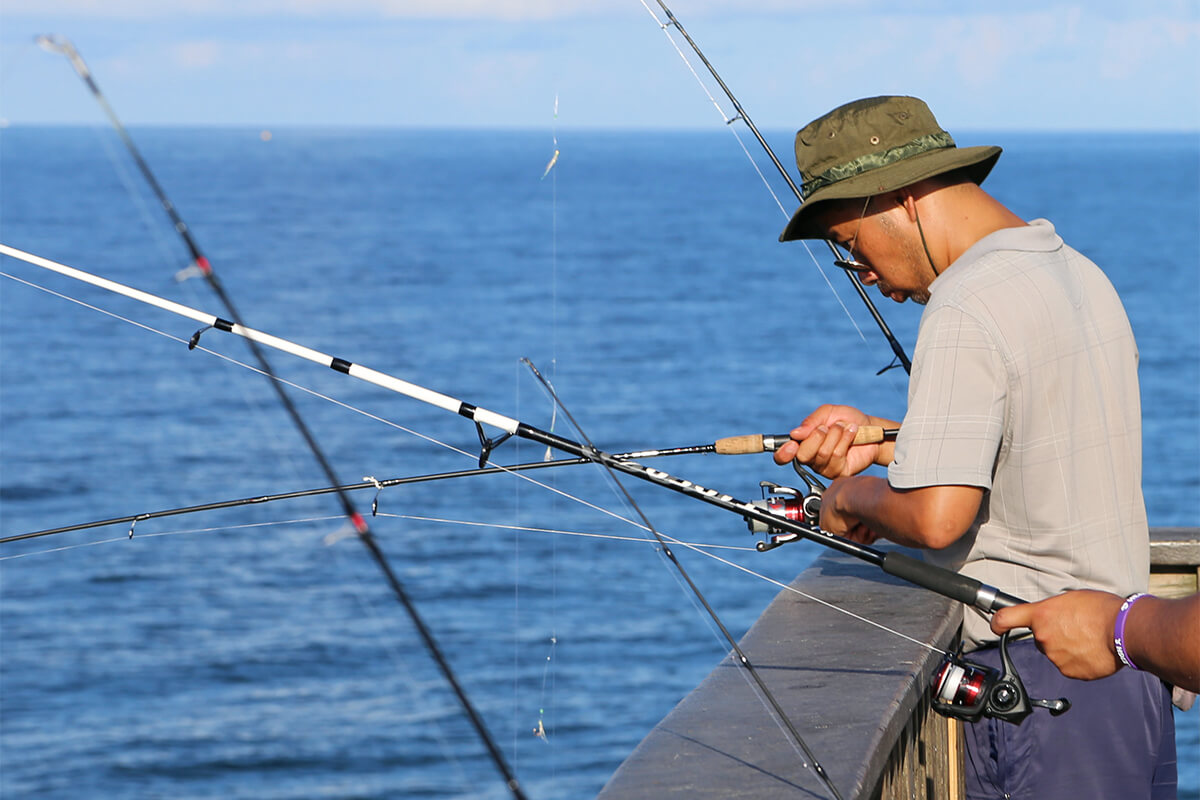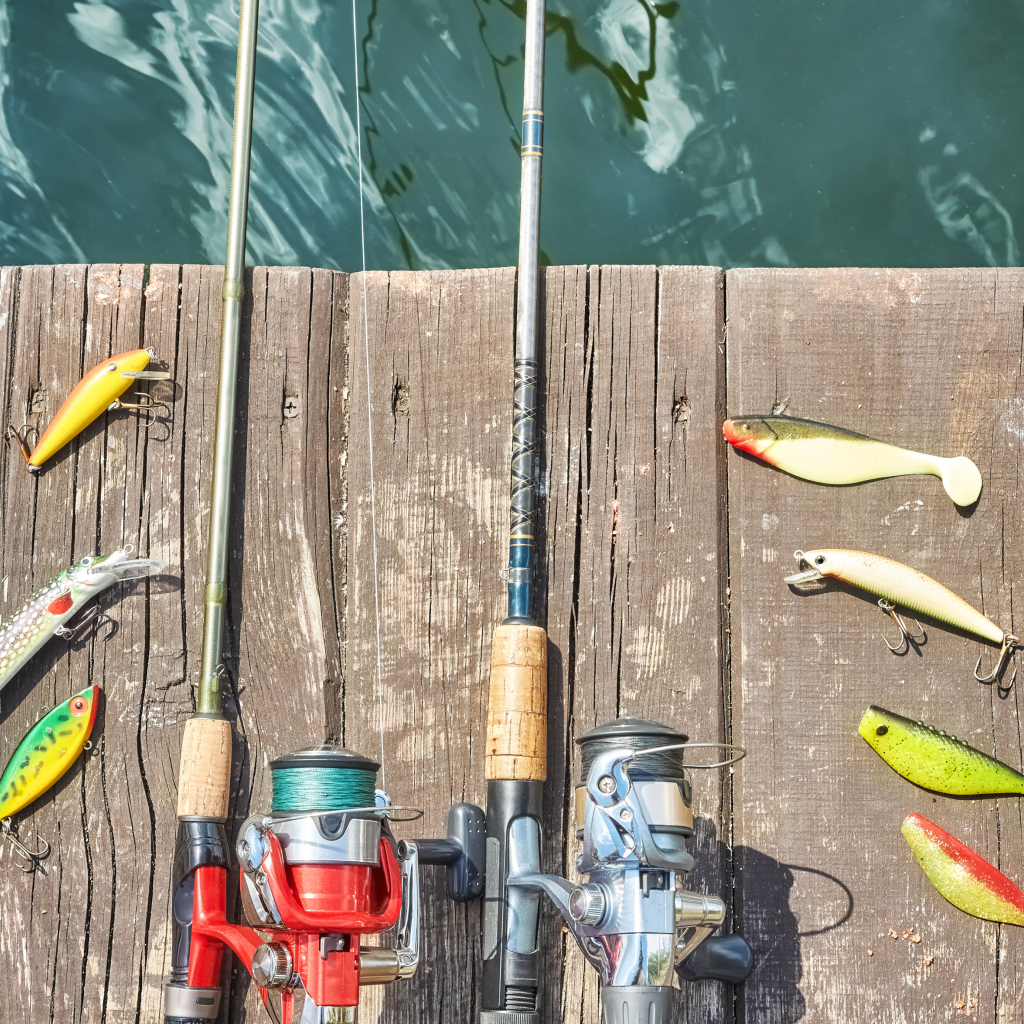Selecting the best fishing lure depends on the target species and the fishing environment. Consider water conditions, fish behavior, and weather patterns for optimum lure choice.
Embarking on a fishing adventure demands the right equipment, and at the heart of this prep work is choosing the ideal fishing lure—an essential factor that influences success rates. Every angler knows that there isn’t a one-size-fits-all when it comes to lures.
Water clarity, temperature, depth, and the natural food sources in the environment all play crucial roles in the selection process. Your lure should mimic the movements and appearance of local prey to entice the fish effectively. Seasoned fishers analyze the day’s conditions, tapping into their knowledge and experience, to pick a lure that vibrates, flashes, or wiggles in just the right way. Always ready to switch things up, they keep a variety of lures on hand to adapt to the ever-changing underwater landscape. With a thoughtful approach to lure selection, anglers can elevate their chances of a memorable catch.
The Art Of Choosing Fishing Lures
Fishing success often rides on lure selection. A well-chosen lure mimics real fish prey. It tempts and triggers strikes from target fish. A poorly chosen one? It simply swims through water, unnoticed. In this guide, discover the art of selecting the perfect fishing lure. Understand the nuances of fish species, and seasonal influences. Learn to match your lure to conditions and ensure a rewarding fishing experience.
Considering Fish Species
Each fish species has unique preferences. These affect lure choice. Some aspects to consider include:
- Diet: What does the fish eat? Match the lure to the prey.
- Size: Select a lure that mimics the size of the prey.
- Behavior: Aggressive fish might prefer fast-moving lures.
For bass, crankbaits or spinnerbaits work well. For trout, try spoons or flies. For pike, larger lures with flashy actions are best.
| Fish Species | Lure Type | Why It Works |
|---|---|---|
| Bass | Crankbaits | Mimics small fish |
| Trout | Flies | Imitates insects |
| Pike | Large Spinners | Draws attention with flash |
Seasonal Influence On Lure Selection
Fish behavior changes with seasons. So must your lures. Here’s a quick guide:
- Spring: Fish are active. Use brighter lures and faster movements.
- Summer: Water is warm. Go for deeper lures as fish dive for cool areas.
- Fall: Fish prepare for winter. Use lures that mimic fattening prey.
- Winter: Slow down. Use smaller lures and subtle movements.
Seasonality affects water temperature and fish metabolism. These impact how fish feed. Adjust your approach with suitable lures for the season.

Credit: koa.com
Know Your Target
‘Know Your Target’ is not just a mantra for business but a time-tested strategy for anglers. Choosing the right fishing lure depends on what fish you are aiming to catch. Different species have unique behaviors and preferences. Understanding these characteristics can steer you towards the lure that will maximize your chances of a successful catch.
Habitat Preferences
Each fish species has a preferred habitat where it thrives. To select the best lure, consider these living spaces:
- Water depth: Some species prefer shallow waters, while others go deeper.
- Structure: Fish often gather around submerged objects or vegetation.
- Temperature: Certain fish favor warm or cool temperatures.
- Water clarity: Murky or clear waters can influence lure choice.
Feeding Patterns
Fish feeding habits dictate the right lure to tempt a strike.
| Time of Day | Feeding Activity | Lure Type |
|---|---|---|
| Morning | High | Topwater lures |
| Midday | Variable | Crankbaits |
| Evening | Increasing | Jigs and plastics |
Keep in mind the prey the fish eats. Match your lure in size, shape, and color to this prey. Seasonal changes also affect feeding patterns, so adjust your lures accordingly.
Matching The Hatch
Imagine you are a fish, swimming under the water. You see food all around you. But what if something looks out of place? You would be suspicious, right? That’s why anglers need to ‘match the hatch.’
‘Matching the hatch’ means using fishing lures that look like what fish are eating. Whether it’s tiny insects or smaller fish, your lure should mimic the local snack. This trick boosts your chances of a good catch!
Color And Size Considerations
Matching colors and sizes of the local prey is a game changer. A shade too bright or a size too large? Fish might just swim away.
Consider these points:
- Water Clarity: Murky waters need brighter colors to stand out.
- Weather Conditions: Sunny days may call for a more subtle touch with something flashy.
- Prey Size: Always check local prey sizes. Your lure should be a close match!
Natural Vs Artificial Lures
Do real worms outdo rubber ones? Sometimes, but not always. Real lures have scent and texture. Artificial lures offer variety and reusability.
| Natural Lures | Artificial Lures |
|---|---|
| Great for scent | Can mimic motions |
| Texture like the real thing | More durable |
| One-time use | Use them again and again |
Choose natural lures for picky fish. Use artificial lures for a full tackle box on diverse trips.

Credit: www.onthewater.com
The Impact Of Water Conditions
Selecting the most effective fishing lure often hinges on understanding the water conditions. Various aspects such as clarity, depth, temperature, and current greatly influence the type of lure you should use. This section dives into how water clarity and depth can dictate the right choice of lure to optimize your fishing success.
Clarity And Lure Visibility
Water clarity can either be your ally or adversary when fishing. Lure visibility is paramount, and choosing a lure that stands out in the current conditions can make a big difference. Here are key points to consider:
- Clear Water: Opt for natural-colored lures that mimic local prey. Subtle movements and realistic profiles are effective.
- Murky Water: Use bright or noisy lures to grab attention. Vibrations and rattles can help fish locate your lure.
Depth And Lure Buoyancy
The depth at which fish are swimming is critical for lure selection. Your lure’s buoyancy should match the targeted depth range. Consider the following:
| Depth | Type of Lure |
|---|---|
| Surface | Topwater lures for fish feeding on the surface. |
| Mid-Water | Suspension lures or swimbaits that can be paused during retrieval. |
| Bottom | Jigs or bottom bouncing lures to stir up sediment and create interest. |
Buoyancy is also vital. Heavy lures sink faster, which is ideal for reaching deeper waters. Lighter lures stay nearer to the surface, perfect for topwater fishing scenarios.
Fishing Techniques And Lure Types
Choosing the right fishing lure can be a game-changer. Explore various techniques and lure types to boost your catch rate. Let’s dive into different styles and find the perfect match for your fishing adventures.
Casting And Retrieval Styles
Selecting a lure depends on how you cast and retrieve. Each technique targets specific fish behaviors.
- Topwater lures create surface action for predatory fish.
- Crankbaits dive deep and mimic small fish.
- Spinnerbaits are ideal for bass in vegetation.
- Soft plastics can be shaped to resemble natural prey.
Match these lures to your casting style to maximize effectiveness.
Trolling With The Right Lure
For trolling, the right lure depends on depth and speed.
| Lure Type | Target Depth | Use Case |
|---|---|---|
| Deep-diving plugs | Deep water | For big game fish |
| Spoons | Variable | For reflective flash |
| Swimbaits | Mid-depth | For natural swimming action |
Adjust your speed to make the lure dance just right to entice a strike.
Diverse Lure Materials
Choosing the right fishing lure is a game-changer on the water. The material of the lure impacts its movement, durability, and attractiveness to fish. Whether targeting bass in freshwater or marlin in the open seas, understanding lure materials is crucial.
Plastic And Rubber Lures
Plastic and rubber lures are versatile and effective. These come in countless shapes and colors. They mimic the prey of fish, like worms or small fish.
- Soft texture – mimics real prey when bitten
- Float or sink – depending on design and added weights
- Variety – worms, grubs, swimbaits, and more
| Type | Use Case | Target Fish |
|---|---|---|
| Worms | Bottom fishing | Bass |
| Swimbaits | Trolling or casting | Pike, Walleye |
Metal Lures And Their Benefits
Metal lures shine and vibrate to attract fish. They are durable and ideal for deep water and fast currents.
- Reflective – sparkles like real fish scales
- Heavy – good for deep waters
- Diverse shapes – spoons, spinners, jigs
| Type | Use Case | Target Fish |
|---|---|---|
| Spoons | Cast and retrieve | Trout, Salmon |
| Spinners | Covering large areas | Bass, Pike |
Adapting To Environmental Factors
Choosing the best fishing lure involves understanding the lake, river, or ocean you’re about to tackle. Moreover, think of “environmental factors” like a secret language shared between fish and nature. Unlock this code with the right lure, and you’re set for success. Weather and time play big roles. Quickly adapt, and even a sudden storm or dusk’s dim light won’t stop your catch!
Weather Patterns
Weather changes fish behavior. Sunny days might call for a lighter, more reflective lure; cloudy skies often mean a bright, easily visible one. Before stepping out, check the conditions. Here’s a quick guide:
- Clear Skies: Go for natural, subdued colors.
- Overcast: Use bright or fluorescent lures.
- Choppy Water: Vibrations matter, so select lures that wiggle a lot.
Time Of Day Adjustments
Early morning or late evening? These are the golden hours. Light levels affect the lure choice. Dawn and dusk may call for lures that create noise or vibration to compensate for the low visibility.
| Time of Day | Lure Type | Why It Works |
|---|---|---|
| Morning | Topwater | Fish are active and looking upwards. |
| Midday | Deep Divers | Sun forces fish deeper; a deep diver finds them. |
| Evening | Spinners | Visibility is low; vibration calls fish in. |

Credit: www.floridasportsman.com
Trial And Error
Finding the perfect lure for your fishing adventure is often a game of trial and error. There is no universal lure that guarantees a catch in every condition. Understanding your environment and target fish species helps, but sometimes, it’s about putting a lure in the water and seeing what happens. Let’s explore effective strategies to help you conquer the learning curve and reel in success.
Keeping A Fishing Journal
Every successful angler knows the importance of learning from each outing. A fishing journal is an invaluable tool for this. Here’s what to keep track of:
- Date and time of your fishing trip
- The weather conditions and water temperature
- Locations fished and their unique features
- Lure types used and any modifications made
- Details on the fish caught or any activity noted
Over time, you’ll spot patterns that inform your lure selection process.
Experimenting With Different Lures
Part of the excitement in fishing comes from experimenting with a variety of lures. Here’s a straightforward approach:
- Start with lures that are well-known for your target fish.
- Change one variable at a time, such as color or size.
- Give each lure a fair amount of time in the water.
- Notice how different lures perform under various conditions.
Keeping your options open and dynamically responding to the day’s conditions could lead to the next big catch.
| Lure Type | Conditions | Fish Caught |
|---|---|---|
| Spinner | Overcast | Bass, Pike |
| Topwater | Sunny | Bass |
Exploring the world of lures should be fun and educational. By keeping detailed notes and daring to try different lures, you’ll soon discover the best fit for your fishing style. Whether you’re on a quiet lake or a rushing river, the right lure is out there. All it takes is perseverance and a bit of curiosity!
The Role Of Angler Experience
Finding the best fishing lure is more art than science. It blends personal skill with natural intuition. Seasoned anglers know that experience is key. Think of it as a step beyond the basics. It’s not just about the lure. It’s the understanding of water conditions, fish behavior, and what’s worked in the past. Experience guides you to make smarter choices, often subconsciously.
Learning From The Community
Talking with fellow anglers is valuable. They share insights on lures that work. Here’s why community knowledge matters:
- Local Wisdom: Learn what thrives in specific areas.
- Variety of Experiences: Gain insights from different perspectives.
- Success Stories: Hear first-hand what’s caught the big ones.
Personal Observations And Adaptations
Personal trial and error lead to better lure choices. Here’s how:
| Observation | Adaptation |
|---|---|
| Weather changes | Switch lures for better results |
| Fish reactions | Adjust techniques and lure types |
| Seasonal trends | Use lures that match seasonal prey |
Keep a journal of what you use and observe. This info helps in making future decisions. It allows for better understanding and personal growth as an angler.
Accessorizing Your Lure
Choosing the right fishing lure is crucial for your fishing success. Beyond basic selection, accessorizing your lure enhances its appeal to fish. Whether you’re targeting bass, trout, or pike, the perfect accessory could be the difference between a good day and a great day on the water. Explore ways to boost your lure’s effectiveness with the following tips:
Adding Attractants
Adding attractants to lures triggers more bites. These are substances that imitate the smell and taste of prey.
- Scents match prey in water. You get more hits.
- Attach scent gels directly on lures.
- Use spray attractants for a scent cloud.
Scented attractants make lures irresistible to nearby fish.
Tuning Your Lure For Optimal Performance
Properly tuned lures move correctly in water, mimicking live prey. This tuning defines how well lures swim.
- Bend the lure’s eyelet for better swimming action.
- Adjust hooks for balanced sinking or floating.
- Test lure in water before fishing.
Correct tuning means better lure action. Fish notice this and strike more often.
Frequently Asked Questions Of How Do You Decide On The Best Fishing Lure For The Type Of Fishing You Plan To Do?
What Factors Determine The Best Fishing Lure?
Lure selection depends on target species, water clarity, depth, temperature, and time of day. For murky waters, bright or noisy lures work well. In clear water, more realistic lures are preferred. Consider these factors for optimal results.
How Does Fish Type Influence Lure Choice?
Different fish are attracted to different movements, colors, and sizes. Match the hatch by choosing lures resembling their natural prey in size, shape, and color. For bass, use crankbaits or spinnerbaits. For trout, small jigs or spoons are effective.
Can Weather Conditions Affect Lure Selection?
Yes, weather conditions play a significant role. Sunny days can call for light-colored lures, while overcast skies favor darker ones. After a storm, fish may be more active, and aggressive lures can be successful.
Why Is Water Depth Critical For Lure Choice?
Certain lures are designed for specific depths. Surface lures work best in shallow water. Mid-water lures are for moderate depths. Deep diving lures are essential for reaching fish in deeper waters. Choose according to the depth where fish are active.
Conclusion
Selecting the right fishing lure makes all the difference between a good catch and going home empty-handed. Consider the water conditions, target species, and tackle compatibility. With the right lure, your fishing adventure can turn into a tale of success.
Don’t forget to keep experimenting and have fun out there on the water!

